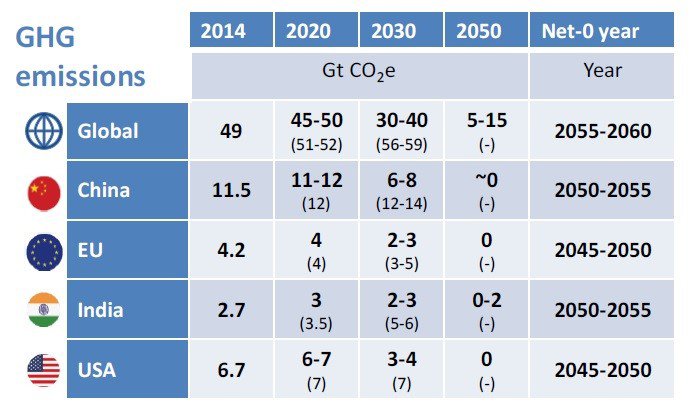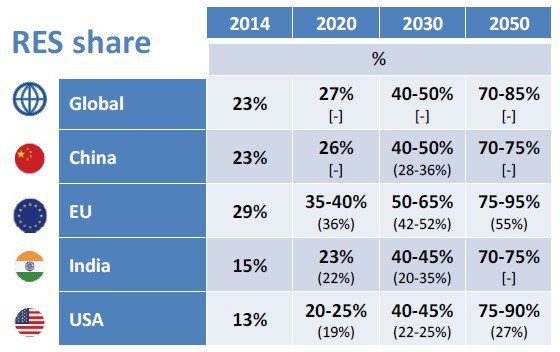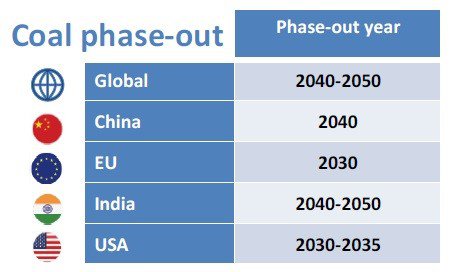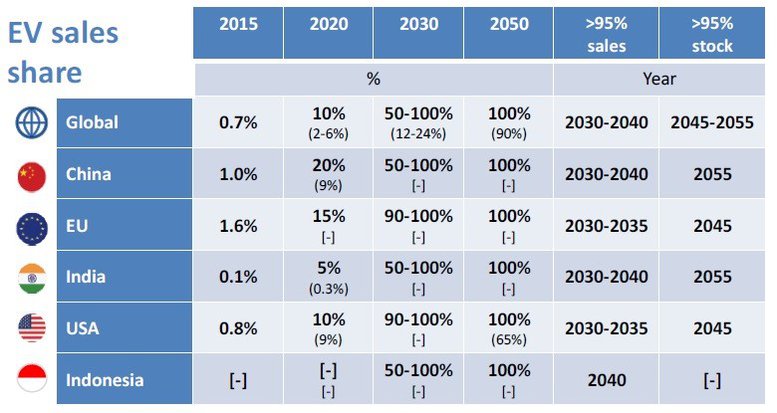Climate Action Benchmarks: Mid-2018 analysis exploring the highest plausible ambition for countries and sectors
Attachments
Background
Supported by the ClimateWorks Foundation, the European Climate Foundation and the We Mean Business Coalition, this CAT report develops a set of climate action benchmarks for countries, sectors and subnational entities that a broad range of actors can use. Those benchmarks aim at helping users to assess if recent developments and future targets of countries, as well as non-state and subnational actors, are compatible with the Paris Agreement long-term temperature limit. For this report, we looked at three sectors (economy wide, power and transport) globally, as well as in detail for five key countries (China, India, the EU, the US and Indonesia), covering three target years (2020, 2030 and 2050).
Proposed benchmarks
The following tables summarize the findings of the study per sector, globally as well as for the five key countries.
Economy-wide GHG emissions:
Globally, GHG emissions must be reduced rapidly to reach net-zero between 2055 and 2060.The countries in scope show consistent results as all the benchmarks are set to reach net-zero emissions around 2050, with the US and the EU set to achieve this slightly earlier than China and India. There is not enough publicly available data for Indonesia to draw conclusions for this benchmark.

Renewable Energy Source (RES) share:
Global electricity generation based on renewable energies must be ramped-up rapidly to reach 40-50% by 2030 and 70-85% by 2050. Country benchmark levels are quite different between OECD and non-OECD countries, with the US and the EU showing higher ambition level but also a larger range of results (between 75 and 90 to 95% respectively), while China and India are at a similar level of ambition of 70 to 75%. There is not enough publicly available data for Indonesia to draw conclusions for this benchmark.

Coal phase-out:
The results show that emissions from coal-fired power stations must be phased out globally between 2040 and 2050, with the phase-out occurring first in OECD countries by 2030 (for the EU) or maximum 2035 (for the US), followed by China in 2040 and India in 2050 latest . There is not enough publicly available data for Indonesia to draw conclusions for this benchmark, but phase-out should at least be consistent with the global phase out by 2050.

CO2 intensity of electricity supply:
Global and country specific ambitions are showing broadly similar trajectories, with CO2 intensity decreasing by roughly half by 2030 and aligning towards a carbon-neutral power system by 2050. Similar to coal phase-out trajectories, China, the USA and the EU are showing a good trend towards achieving the long-term CO2 intensity benchmark. India remains in a more challenging situation. There is not enough publicly available data for Indonesia to draw conclusions for this benchmark.

EV sales share:
We suggest a global benchmark of 100% electric vehicles sales by 2030 to 2040, with the EU and the USA phasing out internal combustion engine cars faster (90 to 100% EV sales share in 2030) than China, India or Indonesia (50 to 100% EV sales share in 2030). We recommend updating this benchmark very regularly to take into account most recent developments.

Link to We Mean Business page
Stay informed
Subscribe to our newsletter